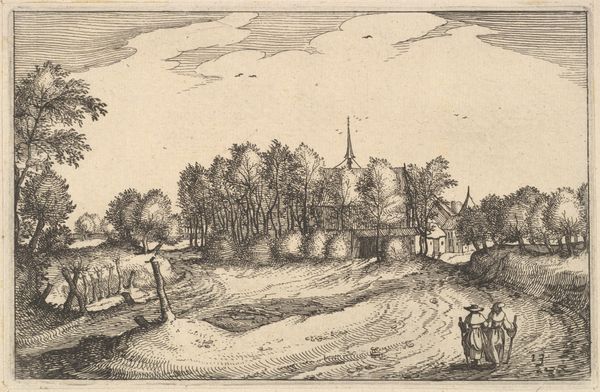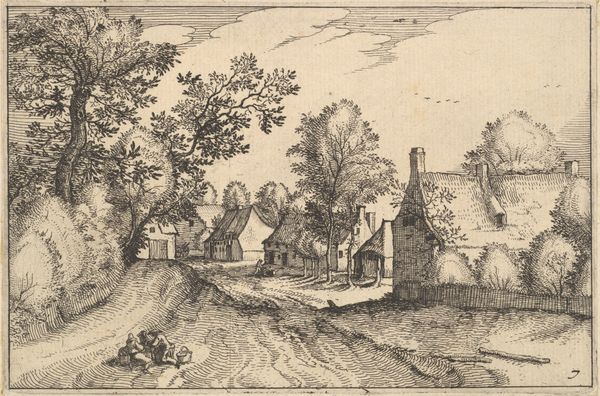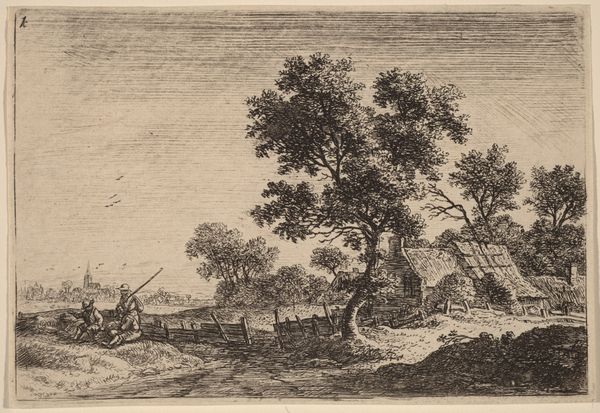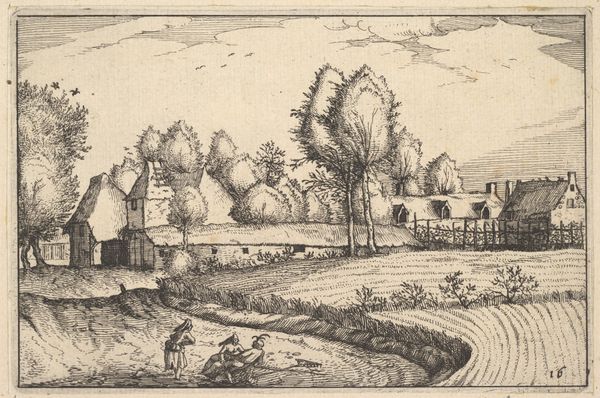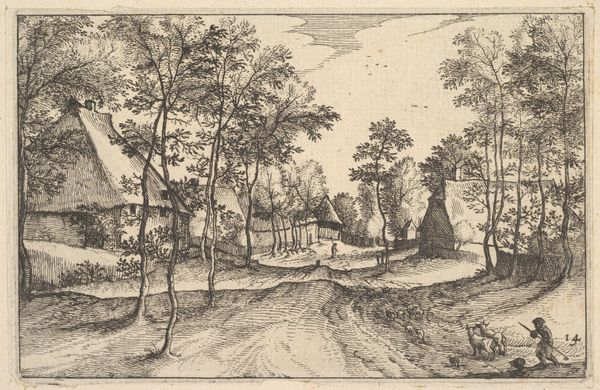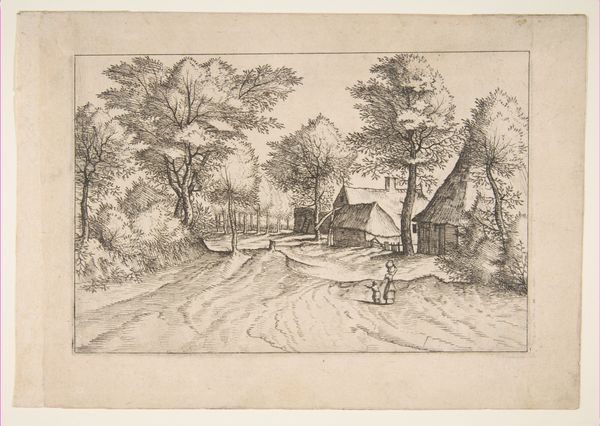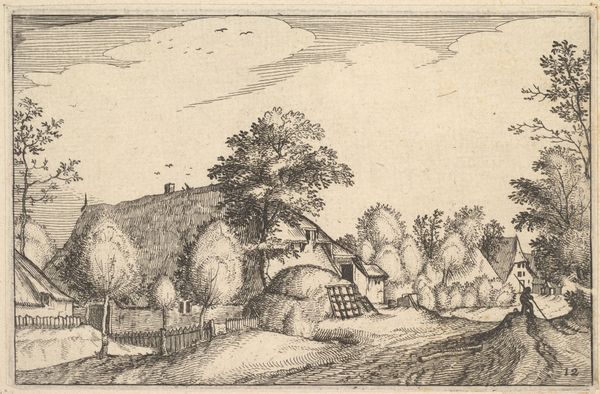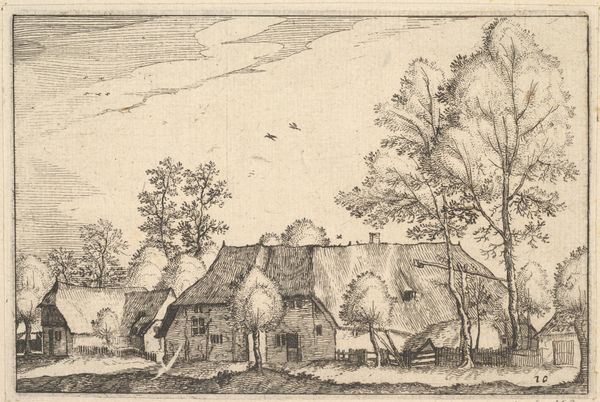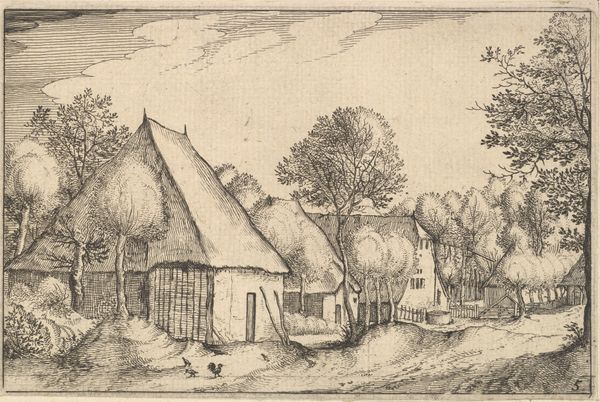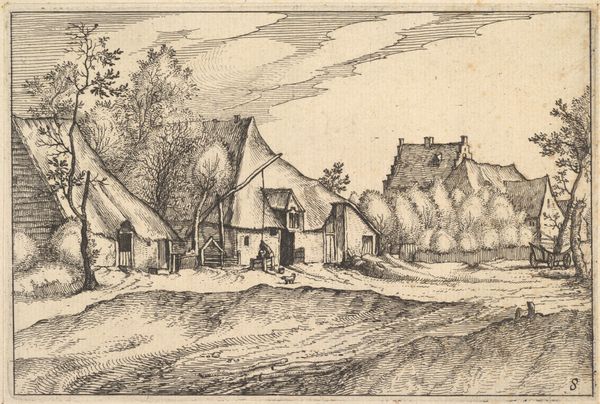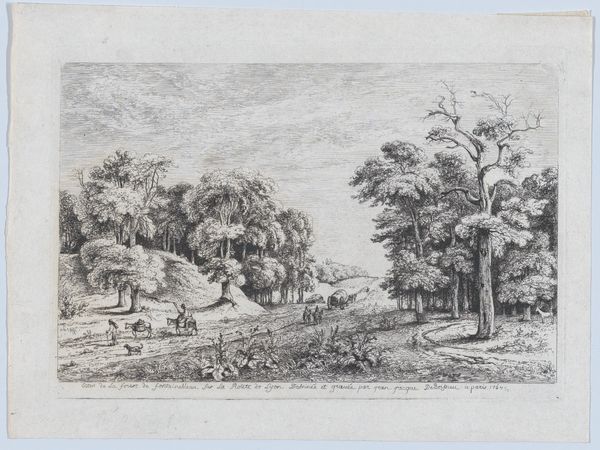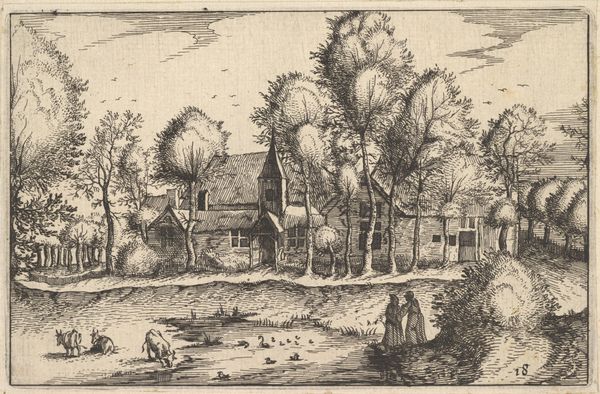
Village Road, plate 4 from "Regiunculae et Villae Aliquot Ducatus Brabantiae" 1605 - 1615
0:00
0:00
drawing, print, etching, engraving
#
drawing
#
baroque
#
pen drawing
#
dutch-golden-age
# print
#
etching
#
landscape
#
house
#
personal sketchbook
#
road
#
horse
#
men
#
cityscape
#
engraving
Dimensions: Sheet: 4 1/8 × 6 5/16 in. (10.5 × 16 cm)
Copyright: Public Domain
Curator: This print, titled "Village Road, plate 4 from \"Regiunculae et Villae Aliquot Ducatus Brabantiae\"", dates from the period 1605-1615, and is currently held at the Metropolitan Museum of Art. It’s the work of Claes Jansz. Visscher, rendered through etching, engraving and possibly pen drawing. Editor: It has a charming stillness. A rustic moment suspended. It's rendered in meticulous lines but there's something almost dreamlike about the composition. All the lines and shadings almost appear to be breathing with the landscape and its village road. Curator: I think the etching beautifully encapsulates the burgeoning interest in landscape during the Dutch Golden Age. Notice the attention given not just to the structures of the village—the thatched roofs—but also to the trees, rendered with individual leaves, almost like portraits of specific, familiar flora. Consider, too, how this scene, commonplace as it might have been, takes on an allegorical weight. Roads in art often signify journeys of life. Editor: Journeys, certainly! And perspective, literally. Look how that winding road recedes into the distance, taking your eye right into the unknown depths of that little copse. There's a traveller setting out in it at the forefront and another smaller character going off in the other direction ahead of the village and further into that beyond. I find it so fascinating how Visscher guides us to this seemingly simple space which also opens us up to the grander scheme of living. Curator: Indeed. The figure on horseback certainly invites that reading, suggesting both movement and perhaps a specific destination. But consider also the figures near the road further on, who look to be toiling as they travel together: a subtle counterpoint suggesting labor or maybe, perhaps commerce? These were motifs closely tied to the burgeoning sense of civic pride in the Netherlands at the time. It feels almost emblematic in that regard. Editor: Yes, emblematic for sure! It strikes me also that in this beautifully drawn image we see how a simple, singular image from daily life in a past time can be more emotionally charged for us today because we're looking back and are aware that this village road might have drastically changed over the past 400 years. Curator: An excellent point. It's a reminder that even seemingly quotidian images carry within them a world of history, belief, and cultural memory. Editor: Well, that's another path travelled in viewing just one small artwork, and a nice reminder about time itself. Thanks for being my road companion, so to speak!
Comments
No comments
Be the first to comment and join the conversation on the ultimate creative platform.
